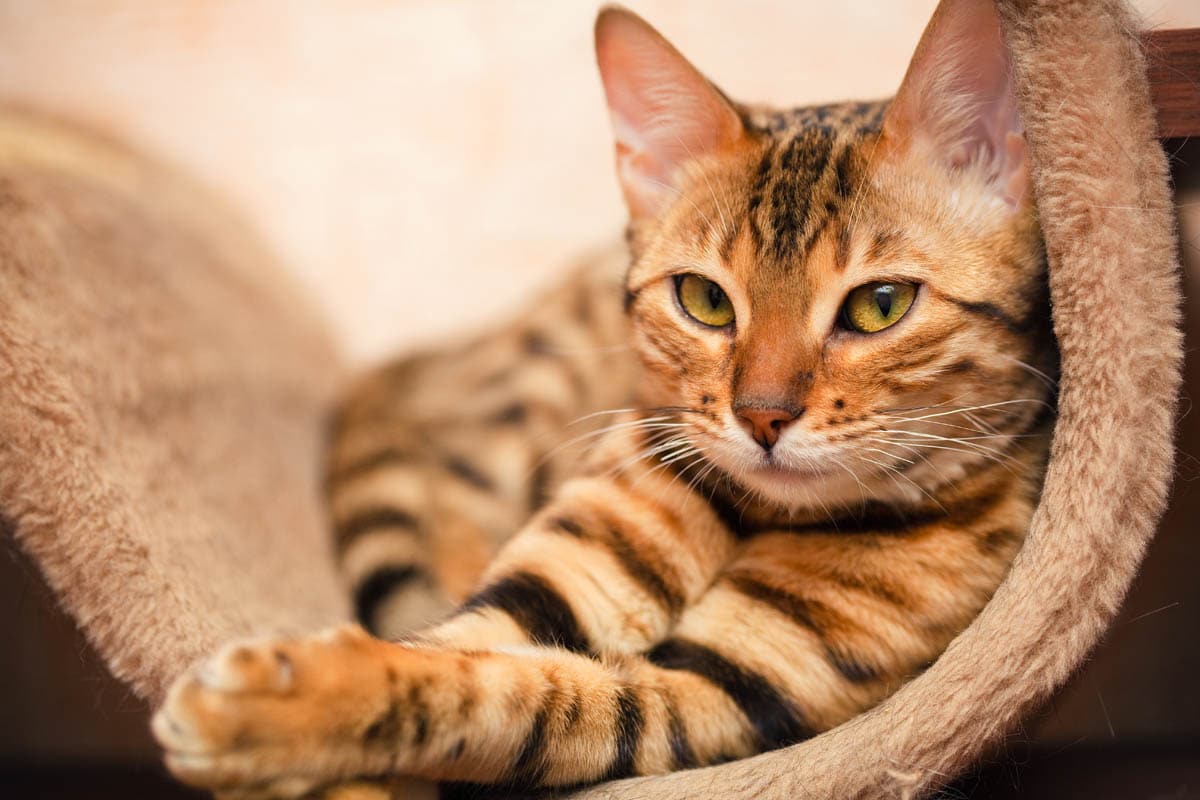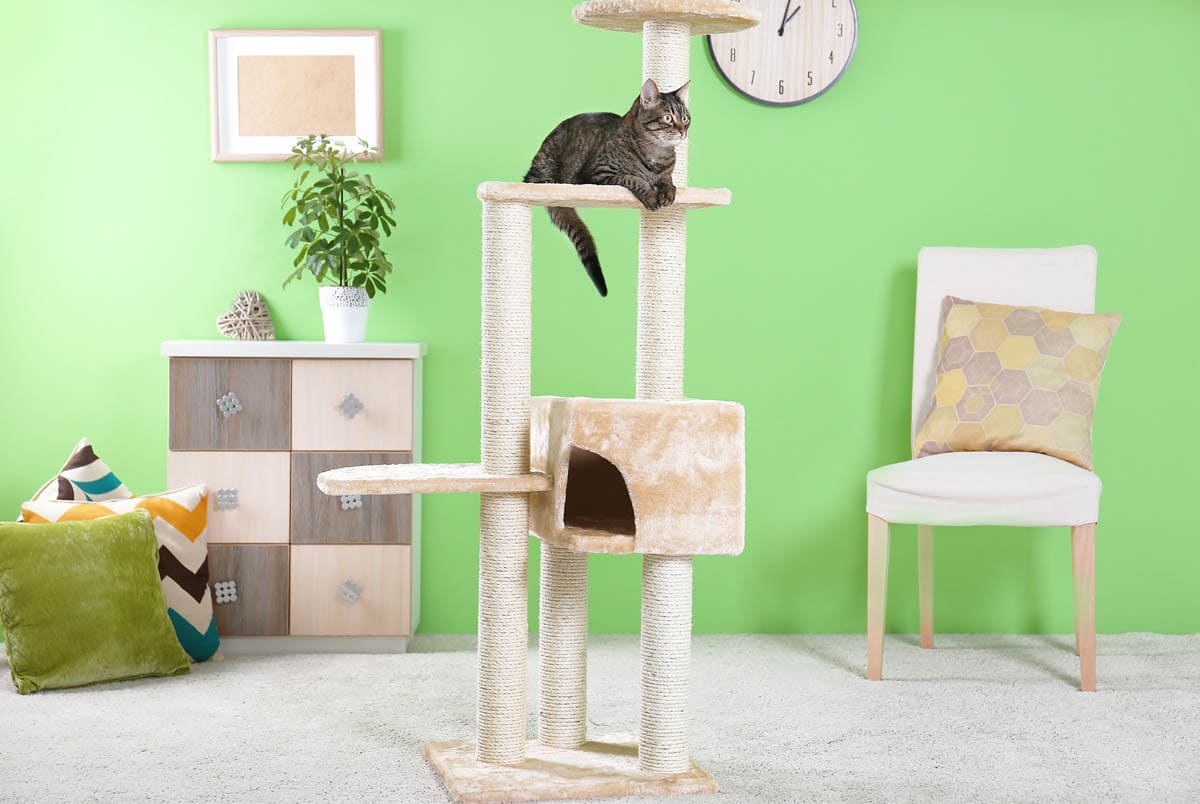Key points
|
What is obsessive-compulsive disorder?
Obsessive-compulsive disorder (abbreviated to OCD) is an anxiety disorder in which a cat engages in abnormal, repetitive and exaggerated behaviours (compulsions) with no real purpose. OCD is a common disorder in many species of animals, including humans, cats and dogs. People with OCD will engage in repetitive or compulsive behaviours such as frequent hand washing, checking the door is locked over and over again.
Most forms of OCD (apart from wool sucking, listed below) can develop in cats of any age, but most often starts around the time of social maturity, between 12-24 months.
Causes of OCD in cats
Obsessive-compulsive disorder may be a manifestation of boredom, stress, anxiety, and in some cases, there may be a genetic component. Some OCD behaviours such as wool sucking and pica are more common in Siamese and related breeds.
Any stressful event can trigger OCD in cats; this can include moving house, a recent stay at a cattery or veterinarian, new pet or family member in the home or a bout of sickness or injury. The behaviour becomes fixed, and the cat continues the behaviour even if the original cause is no longer there due to the stress-relieving pleasure component, which reinforces the behaviour.
Symptoms
It is not always obvious that a cat has OCD as what separates normal behaviours from OCD is the frequency. For example, all cats groom as routine maintenance, but when performed to excess it is classed as compulsive.
Overgrooming (psychogenic alopecia):
Cats typically spend between 30-50% of their awake time grooming. Cats with psychogenic alopecia groom to excess, which can lead to areas of hair loss and skin irritation. Hair loss (alopecia) can occur anywhere that the cat can lick, common locations include the medial (middle) foreleg, inner thighs, belly and perineum.
When damage occurs to the skin, the cat is at risk of developing a bacterial infection which can intensify the licking and lead to further trauma. Hairballs can also develop due to increased ingestion of fur.
Self-mutilation:
Tail or foot chewing are the most common forms of self-mutilation in cats. Instead of licking the cat actively bites and chews at the skin, which causes damage to the tissues. Common target areas are the paws and tail.
Pica and wool sucking:
Both wool sucking and pica are oral compulsions with an increased incidence in Siamese and related breeds. The typical age of onset is 2 to 8 months.
Wool sucking is a behaviour that may have a genetic component, but can also develop in cats who left their mother too early. The cat will fixate on an object, usually a piece of clothing or a blanket and suck it. Over time, wool sucking can progress to pica, which is the ingestion of non-food items. Some cats develop pica but didn’t engage in wool sucking. All non-food objects ingested run the risk of causing a life-threatening gastrointestinal obstruction.
Claw chewing:
Nail-biting and pulling at the claws are a part of the cat’s grooming routine. Chewing the claws helps to remove the loose outer layer and while routine, is only a small part of the grooming ritual. Cats can develop a compulsion to chew the claws to excess in a similar to nail-biting in cats. Once again, it is not always easy to distinguish between normal behaviour and excessive. Pet owners should be aware of how often their cat is engaging in behaviour and watch for signs of trauma.
Vocalisation:
Some cats are naturally talkative, while others rarely vocalise. An increase in vocalisation can develop in entire cats who are calling for a mate, senior cats with dementia or a cat who has lost a housemate.
A stressful incident can trigger an increase in vocalisation in some cats. This can include changes in the home or a new cat in the neighbourhood. Pet owners may punish or reward the cat by yelling at or feeding the cat, which escalates the problem.
Diagnosis
A cat with suspected OCD must be evaluated by a veterinarian to rule out a medical cause before a diagnosis of OCD can be made. For example, a parasitic skin infection can lead to excessive grooming and self-mutilation; other medical causes can include neurological disorders and pain.
The veterinarian will perform a complete physical examination of the cat and obtain a medical history from you which will include the onset of symptoms, any changes in the house (new baby or animal, moved, working more), and any other information you think is important?
Diagnostic workup:
Baseline tests: Complete blood count, biochemical profile and urinalysis to evaluate the overall health of the cat and rule out underlying medical conditions.
Dermatological tests: Skin scrapings, biopsy, fungal cultures and intradermal skin testing are standard diagnostic procedures when looking for skin conditions.
Food elimination trials: Food allergies in cats are common, which can lead to itching, scratching, and trauma to the skin. A food trial can rule out food allergies; the cat is switched to a hypoallergenic diet with no other sources of food (or treats) for 6-8 weeks to see if symptoms resolve. If they do, the cat then resumes his usual diet (challenged) to see if symptoms return.
Treatment
Once a medical cause has been ruled out, the veterinarian can focus on treating the OCD as well as ways to reduce stress and provide environmental enrichment in the home. In some cases, the veterinarian will refer you to a veterinarian who specialises in behavioural issues.
Environmental modification:

- Play therapy: Schedule 10-15 minutes once or twice per day for play therapy, which allows the cat to engage in his natural predatory behaviour. Wand toys are the best for this kind of play.
- Environmental enrichment: Boxes to play and hide in, interactive toys (rotate, don’t leave every toy out all the time), food rewards the cat has to work for, perches or windowsills to watch what is going on outside and where practical a catio or cat enclosure which allows the cat outside access but in a safe and controlled environment.
- Cat trees and perches: These provide cats with a high vantage point where they can assess the environment.
Reduce stress:

- Routine: Cats like consistency and predictability, so try to stick to a set routine; schedule meals, litter tray cleaning, play therapy and social time for the same time every day.
- Avoid changes: Don’t move furniture or the cat’s resources around, don’t bring new pets into the home with a cat with OCD unless a veterinarian recommends it (for example a bored or lonely cat).
- Synthetic pheromones: Feliway is a synthetic pheromone that mimics the cat’s natural feel-good pheromones and can help to reduce stress.
- Work to resolve inter-cat conflict: This may involve separating and re-introducing cats.
- Provide separate key resources which include one litter tray, food and water bowl per cat, which should be spread throughout the house and not lined up next to each other.
- Keep litter trays clean, scoop solids out twice a day and empty and replace them with fresh cat litter once a week.
Behaviour modification:
- Don’t reward the cat when he or she is engaging in obsessive behaviour. This can reinforce the cat and in some cases, escalate the problem. When the cat starts to act out his or her OCD, interrupt the behaviour and redirect the cat to another behaviour, for example, call the cat over for a stroke and reward with a treat for complying.
- Praise and reward the cat when he or she is not acting on the behaviour.
Drug therapy:
Tricyclic antidepressant (TCA)
- Clomipramine (Anafranil): The exact mechanism of action is not known, but it is thought to increase the activity of the neurotransmitter serotonin, which contributes to mood regulation and feelings of well-being and happiness.
Selective Serotonin Reuptake Inhibitor (SSRI)
- Fluoxetine: A generic form of Prozac which works by preventing the brain from reabsorbing serotonin. In this way, fluoxetine helps the brain to maintain enough serotonin so that you the cat has a feeling of well-being, due to improved communication between brain cells.
The cat will start on a low dose, which can be increased if there is no improvement.

